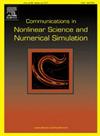基于集成机器学习模型的动态因素原油期权价格预测
IF 3.4
2区 数学
Q1 MATHEMATICS, APPLIED
Communications in Nonlinear Science and Numerical Simulation
Pub Date : 2025-04-15
DOI:10.1016/j.cnsns.2025.108879
引用次数: 0
摘要
在本文中,我们利用增量主成分分析法(IPCA)建立了一个动态因素模型,以确定影响原油期权价格的关键因素。我们采用了八种流行的机器学习算法,即 LASSO、支持向量回归 (SVR)、岭回归、反向传播 (BP)、循环神经网络 (RNN)、长短期记忆 (LSTM)、门控循环单元 (GRU) 和多层感知器 (MLP),来预测原油价格。除了模型置信集(MCS)和变化方向(DoC)测试外,我们还使用四种不同的误差测量方法对它们的性能进行了严格评估。我们进一步引入了一个综合机器学习模型,该模型通过加权平均结合了性能最佳算法的优势,从而提高了预测准确性和稳健性。此外,我们还利用 SHAP 值探索了影响预测精度的因素的可解释性,从而明确了这些因素对预测的贡献。我们的研究结果为通过完善的价格预测技术降低能源风险和提高市场效率提供了巨大的潜力。本文章由计算机程序翻译,如有差异,请以英文原文为准。
Forecasting crude oil option prices with dynamic factors using integrated machine learning models
In this article, we develop a dynamic factor model utilizing the incremental principal component analysis (IPCA) method to identify the key factors influencing crude oil option prices. We employ eight popular machine learning algorithms, i.e., LASSO, Support Vector Regression (SVR), Ridge Regression, Back Propagation (BP), Recurrent Neural Network (RNN), Long Short-Term Memory (LSTM), Gated Recurrent Unit (GRU), and Multi-Layer Perceptron (MLP), to forecast crude oil prices. Their performance is rigorously evaluated using four distinct error measurements alongside the model confidence set (MCS) and direction of change (DoC) tests. We further introduce an integrated machine learning model that combines the strengths of the top-performing algorithms through weighted averaging, enhancing both predictive accuracy and robustness. In addition, we also explore the interpretability of the factors influencing the precision of predictivity using the SHAP value, so that the contribution of these factors towards the prediction is clear. Our findings offer substantial potential for mitigating energy risks and improving market efficiency through refined price forecasting techniques.
求助全文
通过发布文献求助,成功后即可免费获取论文全文。
去求助
来源期刊

Communications in Nonlinear Science and Numerical Simulation
MATHEMATICS, APPLIED-MATHEMATICS, INTERDISCIPLINARY APPLICATIONS
CiteScore
6.80
自引率
7.70%
发文量
378
审稿时长
78 days
期刊介绍:
The journal publishes original research findings on experimental observation, mathematical modeling, theoretical analysis and numerical simulation, for more accurate description, better prediction or novel application, of nonlinear phenomena in science and engineering. It offers a venue for researchers to make rapid exchange of ideas and techniques in nonlinear science and complexity.
The submission of manuscripts with cross-disciplinary approaches in nonlinear science and complexity is particularly encouraged.
Topics of interest:
Nonlinear differential or delay equations, Lie group analysis and asymptotic methods, Discontinuous systems, Fractals, Fractional calculus and dynamics, Nonlinear effects in quantum mechanics, Nonlinear stochastic processes, Experimental nonlinear science, Time-series and signal analysis, Computational methods and simulations in nonlinear science and engineering, Control of dynamical systems, Synchronization, Lyapunov analysis, High-dimensional chaos and turbulence, Chaos in Hamiltonian systems, Integrable systems and solitons, Collective behavior in many-body systems, Biological physics and networks, Nonlinear mechanical systems, Complex systems and complexity.
No length limitation for contributions is set, but only concisely written manuscripts are published. Brief papers are published on the basis of Rapid Communications. Discussions of previously published papers are welcome.
 求助内容:
求助内容: 应助结果提醒方式:
应助结果提醒方式:


